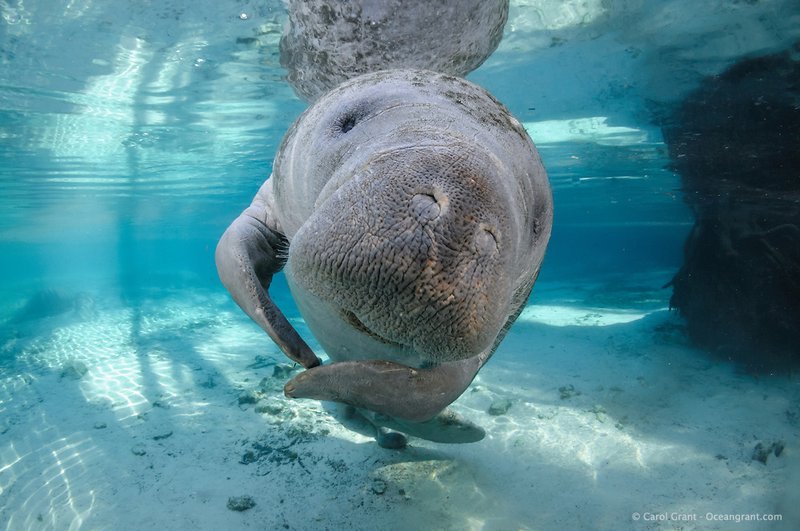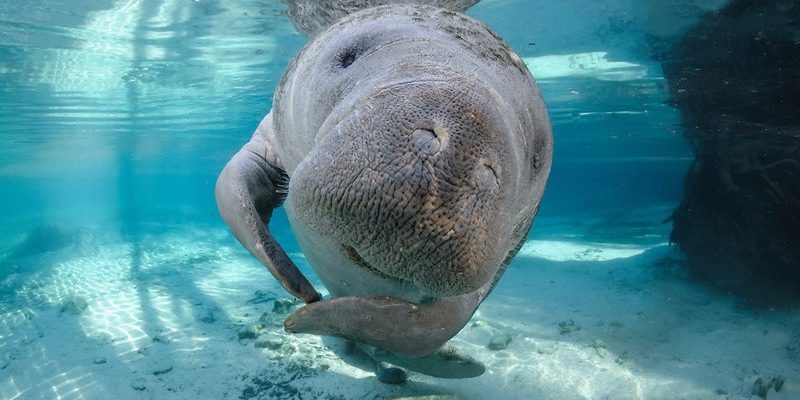
Think of manatees as nature’s lawnmowers. They graze on underwater plants, which might sound simple, but this act has a ripple effect on the entire ecosystem. By munching on seagrass, manatees help maintain healthy habitats for other marine life. Let’s dive deeper into how these fascinating creatures contribute to the well-being of our oceans.
What Are Manatees?
Manatees belong to a group of marine mammals known as sirenids, which also includes the dugong. They typically inhabit shallow waters and can be found in rivers, estuaries, and coastal areas. These hefty animals can weigh anywhere from 800 to 1,200 pounds and reach lengths of up to 13 feet! That’s like a really long couch floating in the water.
There are three main species of manatees: the Florida manatee, the Amazonian manatee, and the West African manatee. Each species has adapted to its environment, but what unites them is their diet. Manatees are herbivores, primarily feeding on seagrasses and other aquatic plants. This is where their nickname as “sea cows” comes from—they’re chomping through vegetation and keeping the underwater gardens healthy.
You might be wondering why these gentle giants matter so much. Well, their role extends far beyond just eating seagrass. They contribute to the overall health of marine ecosystems, making them vital to both the environment and local economies.
How Manatees Support Aquatic Habitats
When manatees graze on seagrass, they don’t just enjoy a snack; they also play a significant part in nutrient cycling. By consuming and then excreting these plants, they fertilize the seabed. This natural process encourages the growth of seagrass and other aquatic plants, which are essential habitats for many marine species, including fish, crustaceans, and even other mammals.
In addition, a thriving seagrass bed helps improve water quality. These plants act like a natural filter, capturing sediment and reducing water turbidity. Less murky water means that light can penetrate better, allowing even more plant life to flourish. This creates a domino effect throughout the entire ecosystem, providing a healthy environment for numerous marine animals.
Think of manatees as the unsung heroes of the sea. They help create homes for countless creatures while contributing to the overall biodiversity of the ecosystem.
The Role of Manatees in the Food Chain
Every creature in an ecosystem plays a role in a larger food web, and manatees are no exception. They operate at a different level than many carnivorous animals, but they’re still a key player. As herbivores, manatees consume vast amounts of aquatic vegetation, providing a source of energy for various organisms further up the food chain.
For instance, as manatees graze, they indirectly support fish populations by creating a healthier habitat. Fish often use seagrass beds for spawning and as nurseries for their young, while other predators, such as dolphins, may rely on these fish for food. By maintaining the health of seagrass beds, manatees ensure that these fish can thrive, ultimately supporting larger predators in the marine food chain.
It’s kind of like a big family dinner; if one family member isn’t holding up their end of the bargain, the whole meal might suffer. In this case, if manatees weren’t around to help keep the seagrass healthy, many marine species could struggle to survive.
Manatees and Their Impact on Water Quality
You might not think of manatees when it comes to water quality, but these gentle giants significantly impact it. As they move through their habitats, manatees stir up sediment in the water. Initially, this might sound detrimental, but it can actually lead to beneficial changes.
When manatees graze on seagrass, they expose the roots of these plants. In turn, this allows for better water circulation and increased oxygen levels, which are crucial for overall ecosystem health. With higher oxygen levels, not only do the seagrass beds thrive, but so do the fish and other aquatic organisms that rely on a healthy environment.
Additionally, healthy seagrass beds can help prevent algae blooms, which can be harmful to marine life and water quality. By supporting seagrass growth, manatees indirectly contribute to clearer, cleaner waters where other marine species can flourish.
The Threats Manatees Face
Despite their importance, manatees face numerous threats that can jeopardize their survival and, consequently, the health of marine ecosystems. One of the biggest dangers is human activity. From boat strikes to habitat destruction, manatees are often caught in the crossfire of our development.
Another significant threat is pollution. Chemicals, plastics, and other pollutants can damage seagrass beds and reduce water quality, which affects manatees directly. When their food sources decline, it doesn’t just impact the manatees—it can ripple through the entire ecosystem.
Conservation efforts are essential to protect these amazing creatures. Organizations and governments are working to create protected areas and implement regulations to reduce boat traffic, limit pollution, and restore habitats. As stewards of the oceans, it’s our responsibility to help ensure that manatees can continue to thrive for generations to come.
The Manatee’s Cultural Significance
Beyond their ecological impact, manatees hold a special place in many cultures. In some regions, they’ve captured the imagination of sailors and coastal communities, often getting mixed up in stories and folklore. From tales of mermaids to warnings about the dangers of the sea, manatees have been woven into the cultural fabric of maritime societies.
Their gentle appearance and calm demeanor make them popular among wildlife enthusiasts and conservationists alike. Many people feel a connection to these creatures and are motivated to support efforts to protect them. This cultural significance helps raise awareness about the challenges manatees face and encourages individuals to get involved in conservation efforts.
The love for manatees also extends to tourism. Many coastal areas promote manatee watching, providing opportunities for people to see these creatures in their natural habitat. This not only supports local economies but also fosters a sense of appreciation for marine ecosystems.
Why Protecting Manatees Matters
So, why should we care about protecting manatees? Well, their well-being is a reflection of the health of marine ecosystems as a whole. When we protect manatees, we’re also promoting the health of habitat and water quality, which benefits countless other marine species.
In a world where environmental challenges are escalating, manatees serve as a natural indicator of ecosystem health. Their presence signals that our waters are clean and that our habitats are flourishing. Losing manatees would indicate a failure in conservation efforts and could lead to broader consequences for marine life.
The good news is that by protecting manatees, we can also promote sustainable practices that benefit the entire ocean. Whether it’s reducing pollution, advocating for safer boating practices, or supporting seagrass restoration projects, every little bit counts.
In conclusion, manatees might be the gentle giants of our oceans, but their role in marine ecosystems is nothing short of vital. They’re environmental gardeners, water quality improvers, and cultural icons. By recognizing their importance and taking action to protect them, we contribute not just to their survival but to the health of our entire marine world. So let’s embrace the role of manatees and work together to ensure that our oceans remain vibrant and diverse for future generations.

